The Plotly express lowess trendline is providing a very poor fit. In some situations, it works well but with this particular data, it is does not.
When I make the lowess trendline using statsmodels.nonparametric.smoothers_lowess.lowess() I get a much better adjustment because it allows to tweak the frac parameter.
So, is there a way to control the parameters of Plotly lowess function to solve that?
df dataframe
date y
1 2016-05-01 15
2 2016-05-08 18
3 2016-05-15 19
4 2016-05-22 14
5 2016-05-29 20
6 2016-06-05 18
7 2016-06-12 17
8 2016-06-19 18
9 2016-06-26 21
10 2016-07-03 23
11 2016-07-10 13
12 2016-07-17 16
13 2016-07-24 19
14 2016-07-31 31
18 2016-08-28 21
19 2016-09-04 22
20 2016-09-11 16
21 2016-09-18 17
22 2016-09-25 15
23 2016-10-02 12
24 2016-10-09 12
25 2016-10-16 12
26 2016-10-23 16
27 2016-10-30 13
28 2016-11-06 14
29 2016-11-13 14
30 2016-11-20 15
31 2016-11-27 12
32 2016-12-04 15
33 2016-12-11 14
34 2016-12-18 9
35 2016-12-25 9
36 2017-01-01 9
37 2017-01-08 7
38 2017-01-15 12
39 2017-01-22 10
40 2017-01-29 14
41 2017-02-05 10
42 2017-02-12 13
43 2017-02-19 12
44 2017-02-26 11
45 2017-03-05 17
46 2017-03-12 13
47 2017-03-19 13
48 2017-03-26 13
49 2017-04-02 15
50 2017-04-09 12
51 2017-04-16 11
52 2017-04-23 11
<class 'pandas.core.frame.DataFrame'>
Int64Index: 49 entries, 1 to 52
Data columns (total 2 columns):
# Column Non-Null Count Dtype
--- ------ -------------- -----
0 date 49 non-null datetime64[ns]
1 y 49 non-null int32
dtypes: datetime64[ns](1), int32(1)
memory usage: 2.0 KB
import plotly.express as px
px.scatter(data_frame = df,
x = "date",
y = "y",
trendline="lowess")
Plotly version: 4.14.3
Edit: adding the corresponding Github issue -> https://github.com/plotly/plotly.py/issues/3202
Thank you
